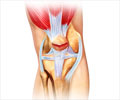Displaced fracture of the shoulder requires an arm in a sling method of treatment compared to surgery in view that it is the least invasive form of treatment.

‘Shoulder fractures can be treated conservatively with the arm in a sling or by surgery. But there was no difference between the two, and thus clinicians should opt for the conservative method.’
Read More..




This is documented by a new study with researchers from Aarhus University, Viborg Regional Hospital, Denmark, and a number of university departments in Finland, Estonia and Sweden.Read More..
The results of the study have just been published in the scientific journal PLOS Medicine.
The results are based on a study of 88 patients over the age of sixty, all of whom had fractures of the shoulder of the type where the bones are displaced.
This often happens in connection with a fall on the shoulder and the traditional treatment for a displaced shoulder fracture is an operation in which the bones are joined again using plates or metal screws. In the study, half of the patients were operated on, while the other half only had the arm supported by a sling. All 88 patients underwent rehabilitation under the supervision of a physiotherapist and were subsequently followed for two years.
Once the study was completed the researchers could conclude that there was no difference between the two types of treatment when they were measured on the basis of the patients’ own assessment of function, pain and quality of life. These results were already valid after one year. The leader of the study, professor of orthopaedic rehabilitation Inger Mechlenburg from the Department of Clinical Medicine at Aarhus University and Aarhus University Hospital, says:
Advertisement
She is prepared for the results to lead to discussions between professionals, because this challenges common practice.
"The fundamental starting point of the study was to find the best form of treatment for precisely this type of injury. We’ve provided evidence that there is no beneficial effect of surgery, and the various healthcare services should address this fact," she says.
Source-Eurekalert















